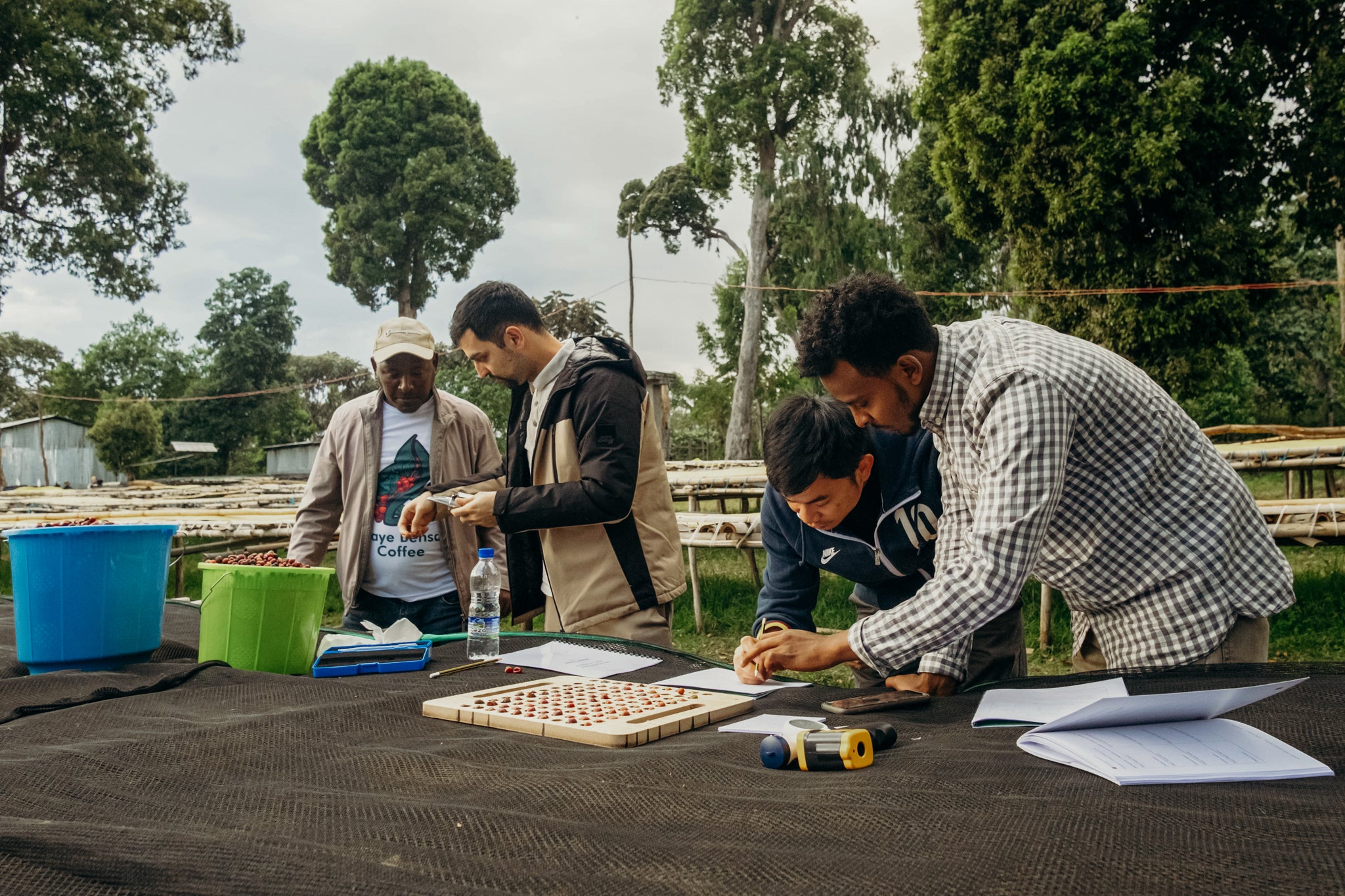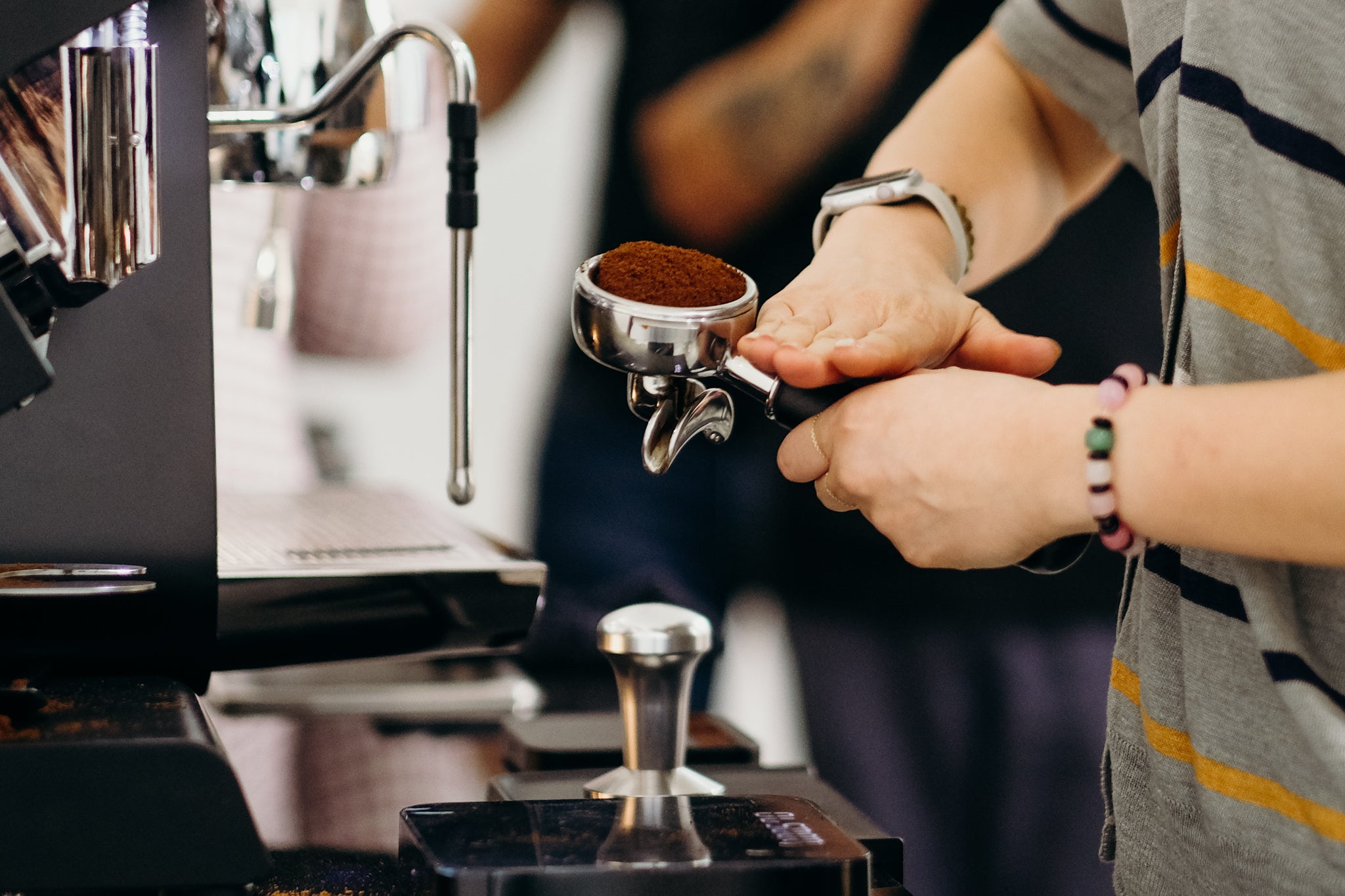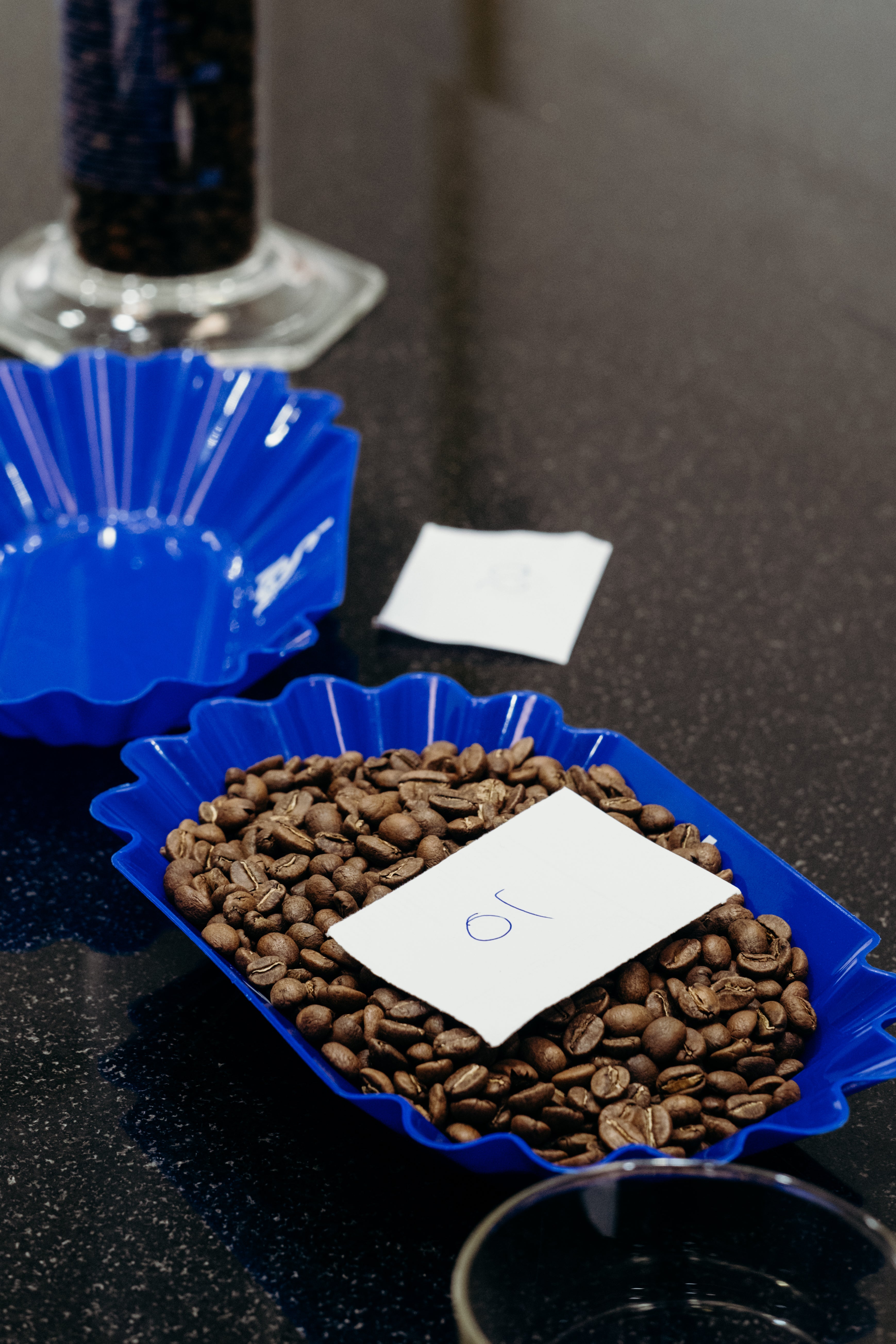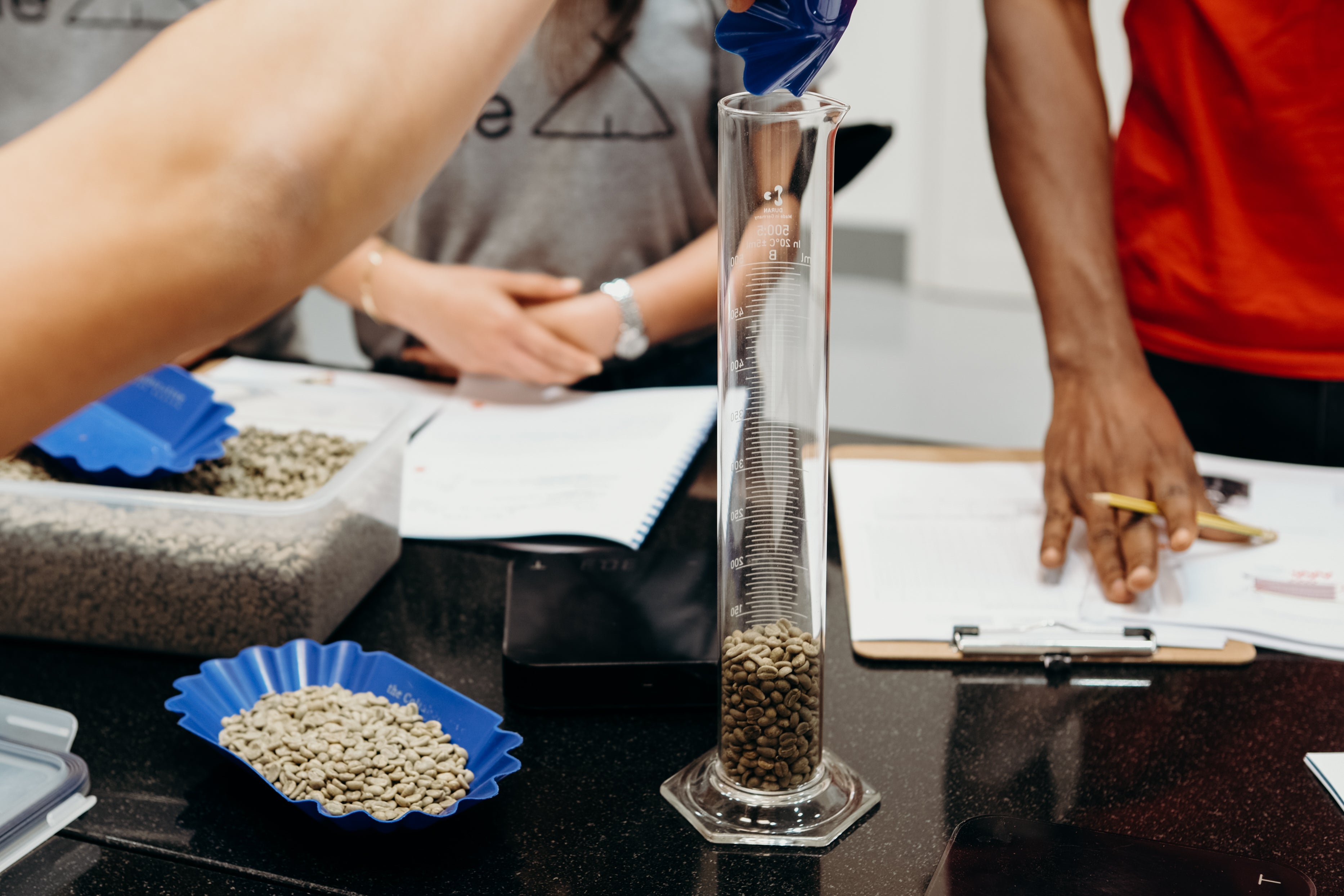Thinking About Density
Density matters in brewing because it dictates how porous and, in effect, how soluble the coffee beans are, which in turn determines how much of the favorable qualities of the coffee are literally pulled out (extracted) of the beans by the heated brewing water and carried (expressed) into the cup - and how fast.
But first, what is Density?
What do we mean by density in the context of roasted coffee and brewing?
Density basically refers to how solid and compact the coffee bean is and how much physical space it takes — for example, as grinds in your portafilter basket or the paper cone filter in your V60, or as whole beans in the coffee bag or any other container.
[Density takes on a different significance when it comes to green beans and then another when it comes to roasting. Consider joining the SCA Green Foundation Class and SCA Roasting Classes to learn more]
Real Talk: Archers Recipes
When using our recommended recipes for your Archers coffees, density should not be a concern at all.
That’s because these recipes have already aligned the brewing variables (i.e., dose, yield, ratios, grind size, brewing time, water temp) with consideration to the density of our coffee beans, which is an outcome of several factors that we have carefully studied (i.e., variety, terroir, and process) and controlled (i.e., roast level and age).
In short, when you use our recipes with Archers beans, you can expect a well-extracted brew in your cup. Telling by taste, it would have a balance of sweet, sour, and bitter tastes, and overall coincide with what you would describe as delicious.
Depending on your sensory acuity, you could recognize the tasting notes on the bag’s label or associate what you perceive to similar, familiar tastes and flavors in your own sensory memory bank.
It would not taste over-extracted, which will have a dominant bitter taste and possibly a drying sensation in your mouth. It also would not taste under-extracted, which will have a dominant sour taste and possibly some saltiness. Both over-extracted and under-extracted cups would feel like unpleasant sensory experiences.
When and What to Check
We figured it’s very likely that you will want to check for density when your brewing time falls far too short or goes way past our recommended target — even when you have used the correct dose and closely approximated the suggested grind size more than a few times.
So here, we first share a summary of some general guidelines. Use them first when you want to gauge the density of your everyday coffee — hopefully, frequently Archers — without having to go into strict measurements of dividing mass by volume.
Then, we will also share some troubleshooting tips, for you to have a starting point for adjusting your recipe to your taste.
General Guidelines
Of course, we should always remain cautious not to overgeneralize because the attributes of every coffee and the factors in every brewing scenario are never exactly the same. But at the same time, without these general guidelines — built from what we have learned, observed, and experienced over the years —we would not have any base to work from.
So we use these currently and update our know-how as needed. Having clarified that, here are some clues that lend an idea of whether roasted beans are on the denser side or the less dense side.
We encourage you to piece these together with your own research and experience because it will lead you to become a better brewer.
- Variety - Varieties like Kenya’s SL 28 and SL 34 are reported to be among the denser varieties. In our experience, we’ve found the Ethiopian JARC varieties we have been working with, 74158, 74110, and 74110, to be on the denser side.
- Terroir - Higher-grown coffees cultivated in the most beneficial microclimates receive optimal nourishment, making them healthier and denser.
- Process - Traditionally washed-processed coffees have been commonly observed to be denser than coffees processed as naturals or honeys.
- Roast Level - Lighter or less developed roasts are denser than darker or more developed roasts.
- Age - A coffee is denser when it is nearer its roast date, and gets less dense as it ages.
Troubleshooting Tips
After you determine that your beans may be either denser or less dense than what the recipe has considered, we suggest the following approach.
1. Grind Size
First, revisit grind size. Try to grind much finer (if your brewing time was running too short) or much coarser (if your brewing time was too long).
If, after adjusting grind size, you finish the brew within the target time frame but the coffee still does not taste well-extracted —
2. Temperature
The next variable you can revisit is temperature, remembering that the aim is to get just the right amount of the desirable qualities of a coffee to be extracted from within the bean and expressed in the cup.
Keeping all other variables the same, try to increase your water temperature if your previous cup tasted under-extracted. Or, decrease temperature if it tasted over-extracted.
3. Ratio (Dose:Yield)
Next, if and only if you reach this point and your coffee still does not taste well-extracted, you would try to adjust your ratio, which is the relationship between your dose (gram weight of ground coffee beans) and yield (gram weight of water).
— For Filter, our recommended ratio is 1:15
— For Espresso taken black, it is 1:1.8
— For Espresso as milk base, it is 1:1.5
The rule of thumb is to shorten the ratio if you were over-extracting and to stretch the ratio if you were under-extracting.
— ‘Shorten the ratio’ can mean either increasing the dose while keeping the yield the same, or keeping the dose the same but decreasing the yield.
— ‘Stretch the ratio’ usually means increasing yield while keeping the dose the same. In this case, for espresso, it will be natural for your brew time to stretch (i.e., take longer to finish) as well.
A WELL BALANCED CUP
You will know when you have achieved the best ratio when your palate finally agrees that you have brewed a well-extracted cup.
Our fingers are crossed that by this point, your brew will taste the best it possibly can. If, however, it does not, it’s a cue that it may be time to check your water.
GO DEEPER INTO COFFEE DENSITY






